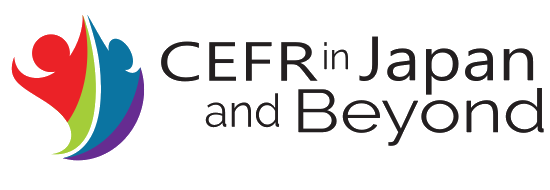Volume4
CEFR Journal - Research and Practice
Volume 4 (December 2021)
https://doi.org/10.37546/JALTSIG.CEFR4
These articles are open access and licensed under an Attribution-NonCommercial-NoDerivatives 4.0 International (CC BY-NC-ND 4.0) license.
Download PDF of complete issue:
Click here for downloading complete issue of volume 4 with DOI
Table of Contents
Volume 4-1, page 5-24: The CEFR Companion Volume - What's new and what might it imply for teaching/learning and for assessment?, Brian North (CEFR and CEFR/CV co-author)
Volume 4-2, page 25-42: Mediation in practice in an ESAP course: Versions of the Medical English student conference, Magdalini Liontou (University of Jyväskylä) and Eva Braidwood (University of Oulu)
Volume 4-3, page 43-65: Foreign Language Education Reform through Action Research - Putting CEFR educational principles into practice, Gregory Charles Birch (Seisen Jogakuin College), Jack Victor Bower (Tezukayama University), Noriko Nagai (Ibaraki University) and Maria Gabriela Schmidt (Nihon University)
Editorial - Volume 4, Fergus O'Dwyer
The central concerns of the CEFR Journal are learning, teaching and assessment, with one focus of the journal to present fresh perspectives and practices that progress innovative elements relating to the above. The fourth volume of the journal opens with a contribution from Brian North examining some of these elements: the social agent in an action-oriented approach, mediation and plurilingualism. While developed in the original 2001 document, the 2020 Companion Volume (CEFR/CV) aims to create avenues for further elaboration and dissemination within these inter-related issues.
North discusses the new CEFR mediation descriptors as the potential basis of curriculum aims and assessment for/as learning, and how they potentially broaden the scope of language activity in classrooms and learner involvement in these activities. This ties in with the social agent in an action-oriented approach: North argues scaffolded learning through integrated collaborative tasks may effectively harness a broad range of the learner’s resources. This connects with the second article (by Magdalini Liontou and Eva Braidwood) about a set of simulation activities (a student conference) for medical students in Finland. One important point to note is that teaching enhancements found in the article most probably would have not been discovered if not due the mother of invention: necessity! Due to COVID-19 lockdowns, the activities morphed into a hybrid conference of asynchronous presentations with real-time Q&A forums in online posts. As a result, the new design activated production, reception, interaction and mediation modes simultaneously. The editors are happy to find student perceptions
regarding mediation tasks, particularly a discussion of the benefits of mediation and how authentic communication tasks can enhance engagement and learner autonomy. Participation in the conference, which requires learners to interpret and communicate meaning to others, was perceived to enhance medical-specific learning and facilitate higher-level cognition.
The thread of teacher researchers offering valuable insights into approaches utilizing the CEFR in different organizations found in previous volumes is further developed in the final article. Greg Birch and colleagues discuss their Japanese government funded project which supports several small-scale action research initiatives, proposing a 3-stage CEFR-focused AR model (CARM, which is based on plan, action, and critical review). The model potentially facilitates researchers and researcher networks to generate improved teaching practices using the CEFR as a reference and conceptual tool. With reflection integral in each stage, one aim of CARM is to provide detailed guidance to ensure research is conducted systematically and rigorously. The journal is one avenue where other teacher researchers can take up the challenge to incrementally develop their practices, and bring the enterprise forward by sharing exemplary practices with the language teaching community.
The implications of the developments for the classroom and assessment of learning found in this volume will be developed further in upcoming contributions due to be published in the fifth volume. As noted in the call for papers, there is room for further submissions to the journal where contributors personally engage with the ideas found here in their own context and practices.
—Dublin (Irland), November 2021
* * * * * * *
(Update February 25th, 2023 MGS)

